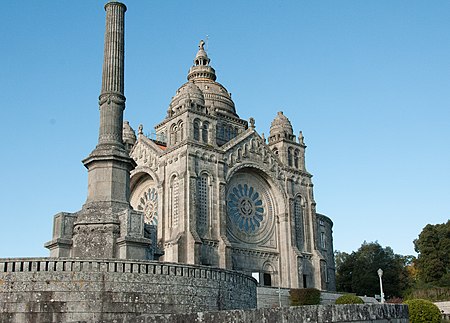Viana do Castelo

Viana do Castelo (Portuguese pronunciation: [viˈɐnɐ ðu kɐʃˈtɛlu] ) is a municipality and seat of the district of Viana do Castelo in the Norte Region of Portugal. The population in 2011 was 88,725, in an area of 319.02 km². The urbanized area of the municipality, comprising the city, has a population of approximately 36,148 inhabitants, although the extended densely populated region reaches surrounding municipalities like Caminha and Ponte de Lima with a population above 150,000 inhabitants. It is located on the Portuguese Way path, an alternative path of the Camino de Santiago, and at the mouth of the Lima river.
Excerpt from the Wikipedia article Viana do Castelo (License: CC BY-SA 3.0, Authors, Images).Viana do Castelo
Estrada de Santa Luzia, Viana do Castelo Areosa (Viana do Castelo (Santa Maria Maior e Monserrate) e Meadela)
Geographical coordinates (GPS) Address Nearby Places Show on map
Geographical coordinates (GPS)
| Latitude | Longitude |
|---|---|
| N 41.7 ° | E -8.8333333333333 ° |
Address
Estrada de Santa Luzia
Estrada de Santa Luzia
4901-858 Viana do Castelo, Areosa (Viana do Castelo (Santa Maria Maior e Monserrate) e Meadela)
Portugal
Open on Google Maps







